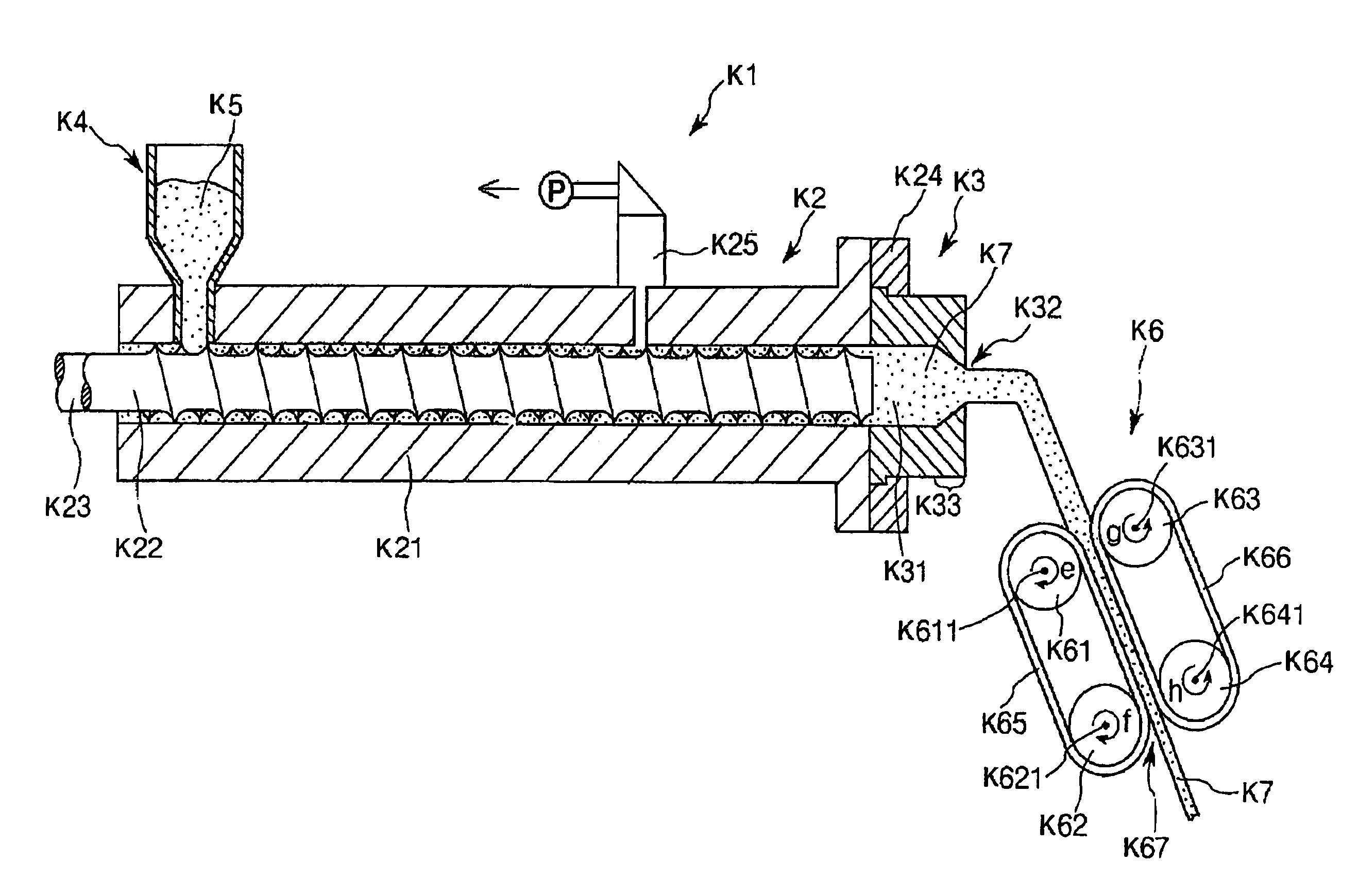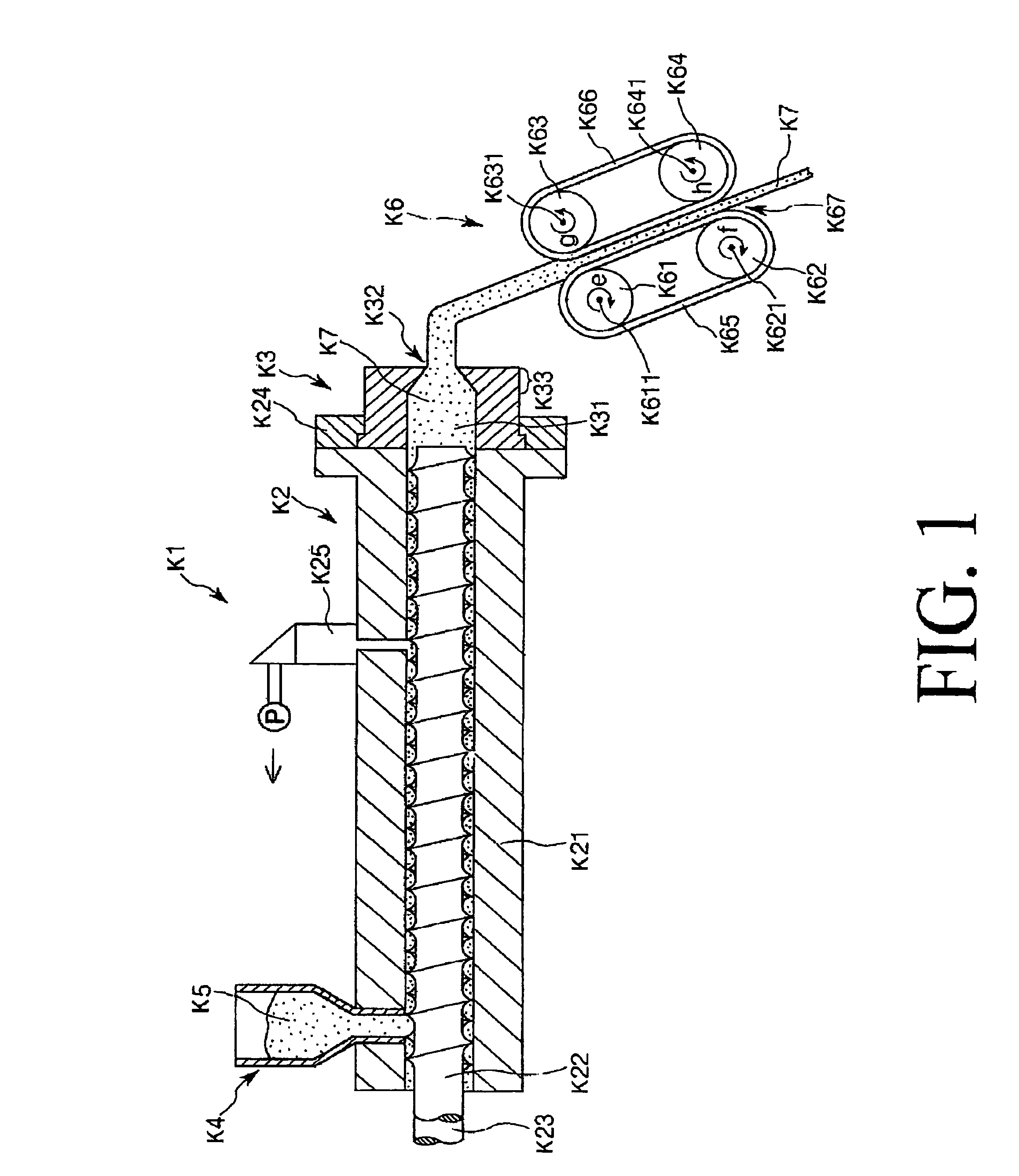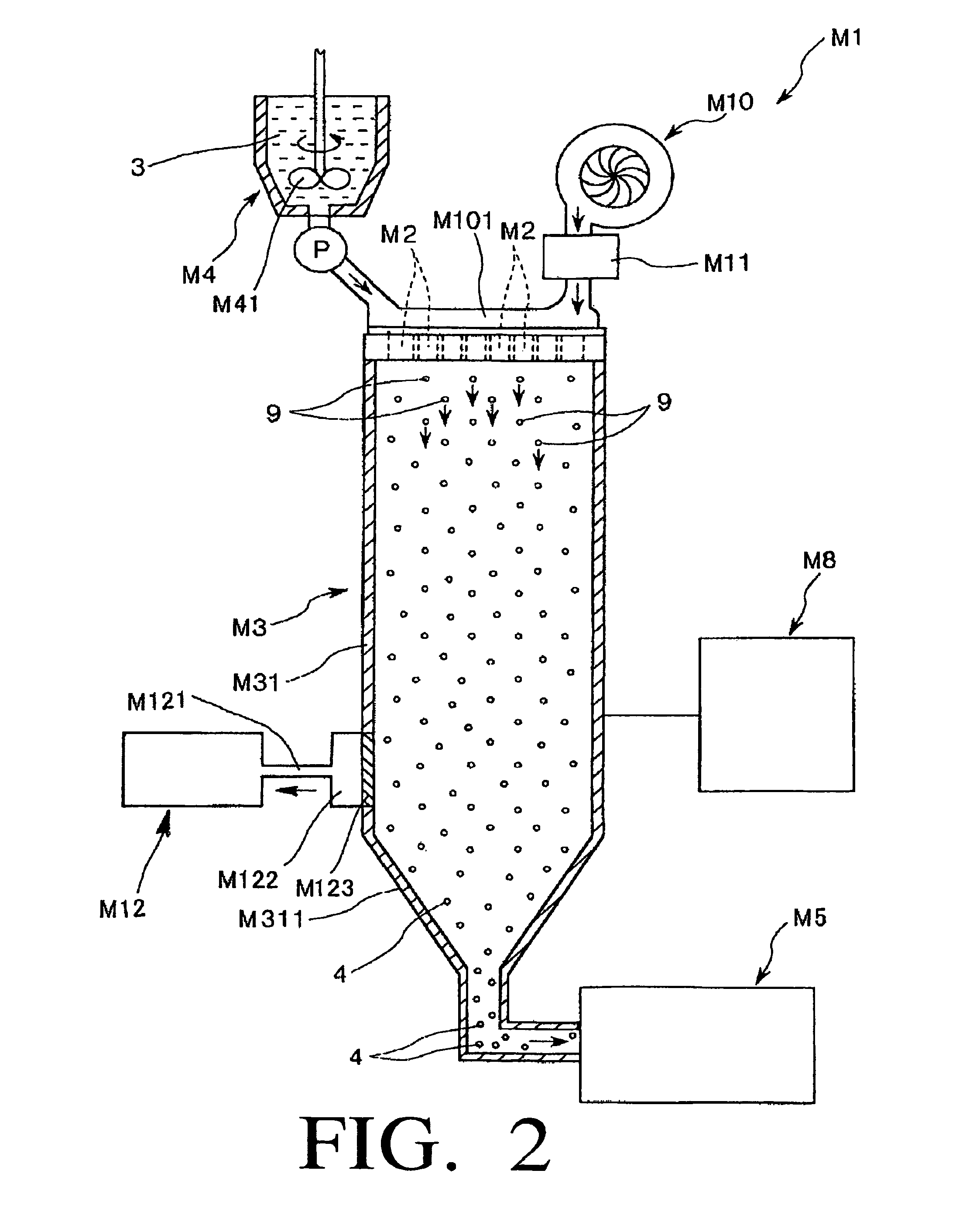Liquid developer
a liquid developer and developer technology, applied in the field of liquid developers, can solve the problems of difficult to obtain toner particles each having a sufficiently small diameter, difficult to form toner images with high resolution, and contamination, and achieve the effect of harmless to the environment and excellent fixing characteristics
- Summary
- Abstract
- Description
- Claims
- Application Information
AI Technical Summary
Benefits of technology
Problems solved by technology
Method used
Image
Examples
example
(1) Production of Liquid Developer
Example 1
[0287][Production of Dry Fine Particles]
[0288]First, 80 parts by weight of an epoxy resin (EPICOAT 1004, softening point Tf thereof was 128° C.) as a binder resin, and 20 parts by weight of a cyanine pigment (“Pigment Blue 15:3”, manufactured by Dainichiseika Color & Chemicals Mfg. Co., Ltd.) as a coloring agent were prepared.
[0289]These components were mixed using a 20 L type Henschel mixer to obtain a material for producing toner particles.
[0290]Next, the material (mixture) was kneaded using a biaxial kneader-extruder shown in FIG. 1. The entire length of a process section of the biaxial kneader-extruder was 160 cm. Further, the material temperature in the process section was set to be 105 to 115° C. Furthermore, the rotational speed of the screw was 120 rpm, and the speed for feeding the material into the kneader-extruder was 20 kg / hour.
[0291]Under these conditions, the time required for the material to pass through the process section w...
example 2
[0317]A liquid developer was prepared in the same manner as in the Example 1 except that the oxidation polymerization accelerator was changed to one shown in Table 1 and the amount of the unsaturated fatty acid glyceride contained in the insulation liquid was changed to as shown in the Table 1 by changing the conditions for preparing the insulation liquid.
example 3
[0318]A liquid developer was prepared in the same manner as in the Example 2 except that the oxidation polymerization accelerator was changed to one shown in the Table 1 and the oxidation polymerization accelerator which was encapsulated by the following method was used.
[0319]
[0320]First, 10 g of the oxidation polymerization accelerator was dissolved in 15 ml of acetone, and the thus obtained solution was adsorbed by a porous hydrophilic silica gel to thereby obtain core bodies. Then, 10 g of the thus obtained core bodies and 20 g of polyethylene glycol (PEG) were heated and mixed to thereby obtain a mixture thereof. Thereafter, the mixture was put into 400 ml of a solvent (AF6: Product of NIPPON MITSUBISHI OIL CORPORATION), and it was sufficiently dispersed in the solvent, then it was gradually cooled down so that PEG was settled down. Then, the solvent was removed by a filtering member to thereby obtain an oxidation polymerization accelerator with being encapsulated.
PUM
 Login to View More
Login to View More Abstract
Description
Claims
Application Information
 Login to View More
Login to View More - R&D
- Intellectual Property
- Life Sciences
- Materials
- Tech Scout
- Unparalleled Data Quality
- Higher Quality Content
- 60% Fewer Hallucinations
Browse by: Latest US Patents, China's latest patents, Technical Efficacy Thesaurus, Application Domain, Technology Topic, Popular Technical Reports.
© 2025 PatSnap. All rights reserved.Legal|Privacy policy|Modern Slavery Act Transparency Statement|Sitemap|About US| Contact US: help@patsnap.com



